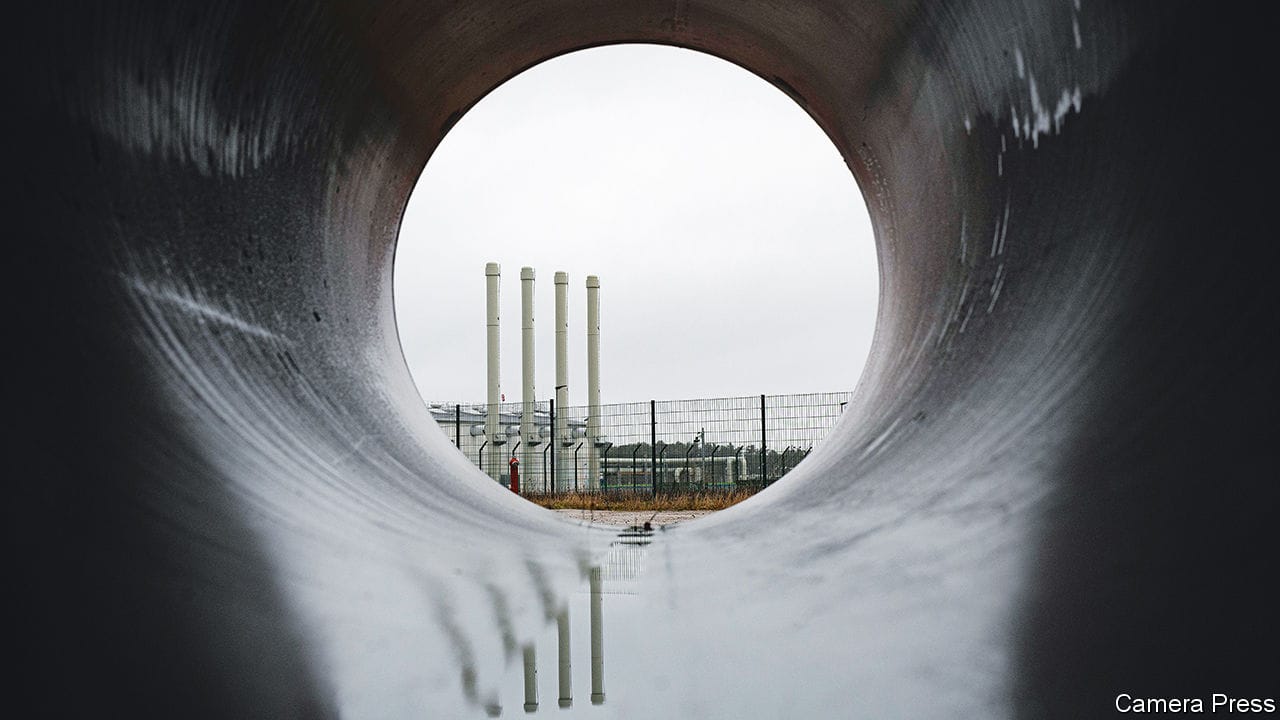Europe is preparing for Russian gas to be cut off this winter
An EU-wide plan is needed to cope

“Social peace in Germany is being challenged,” declared Robert Habeck, Germany’s vice-chancellor, on July 7th. The villain: natural-gas prices. Russia is throttling Europe’s supplies in revenge for its support for Ukraine. In Germany, which relies on Russia for around one-third of its gas imports, energy bills are expected to soar. Gas prices will cause firms huge losses; ultimately, Mr Habeck fears, they could trigger a financial meltdown. The ultimate threat—a complete Russian cut-off—looks ever more plausible.
Gazprom, Russia’s state-controlled gas goliath, has been squeezing the Europeans for months. s&p Global, a research firm, reckons that in June Russia piped just 4.7bn cubic metres (bcm) to Europe, barely a third of the level in early 2021 (see chart 1). The biggest gas flows come via Nord Stream 1 (ns1), which links Russia to Germany via the Baltic sea. (Nord Stream 2, a new pipeline on the same route, was denied approval by Germany as punishment for Russia’s aggression.)
This article appeared in the Europe section of the print edition under the headline "Winter is coming"
Europe July 16th 2022
- Europe is preparing for Russian gas to be cut off this winter
- The war is forcing Ukraine’s energy planners to be creative
- Ukraine’s new rockets are wreaking havoc on Russia’s army
- Turkey grapples with triple-digit inflation
- How many cows are too many, asks the Dutch government?
- Down with long school summer breaks
More from Europe

“Our Europe can die”: Macron’s dire message to the continent
Institutions are not for ever, after all

Carbon emissions are dropping—fast—in Europe
Thanks to a price mechanism that actually works

Italy’s government is trying to influence the state-owned broadcaster
Giorgia Meloni’s supporters accuse RAI of left-wing bias
